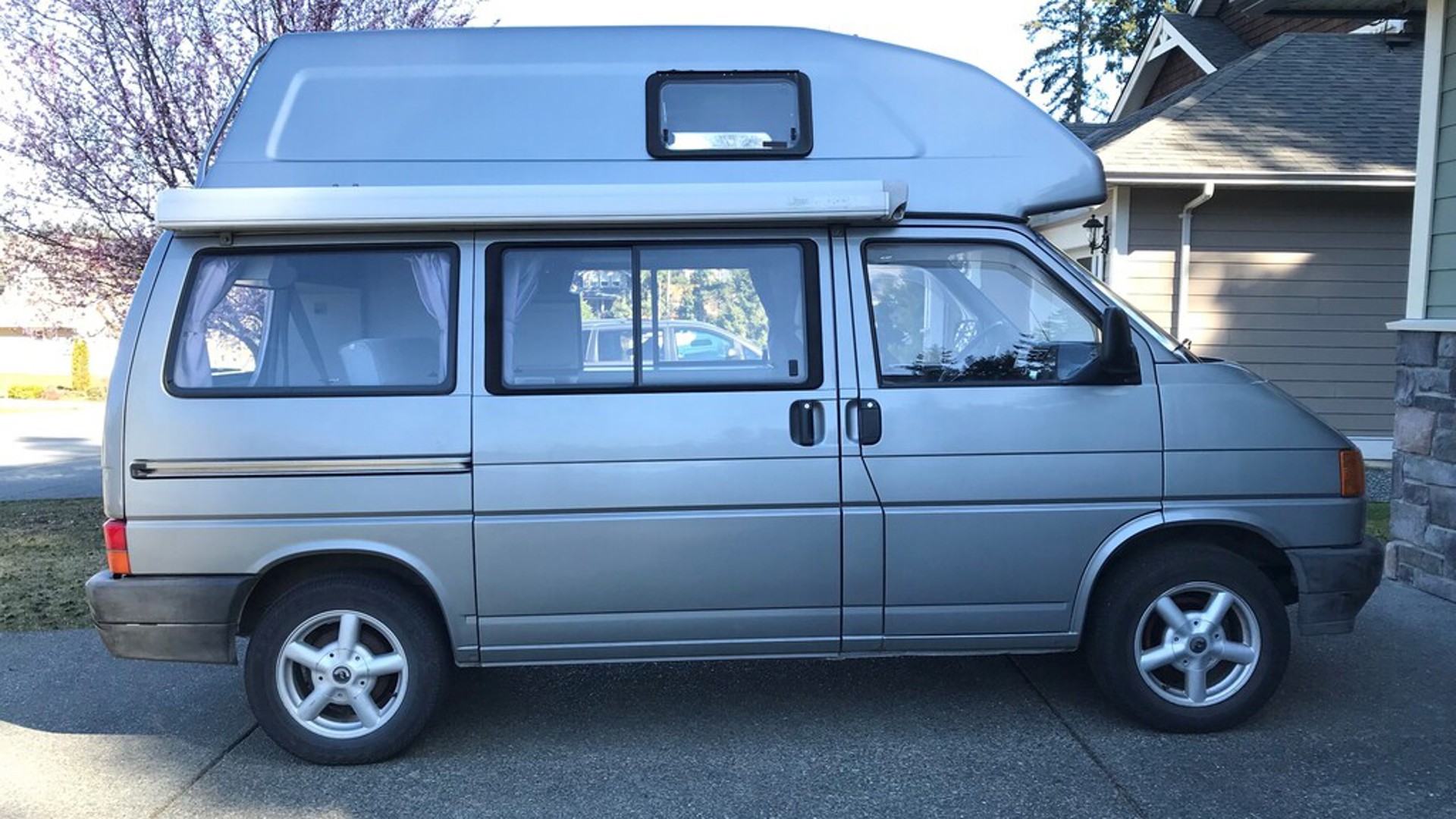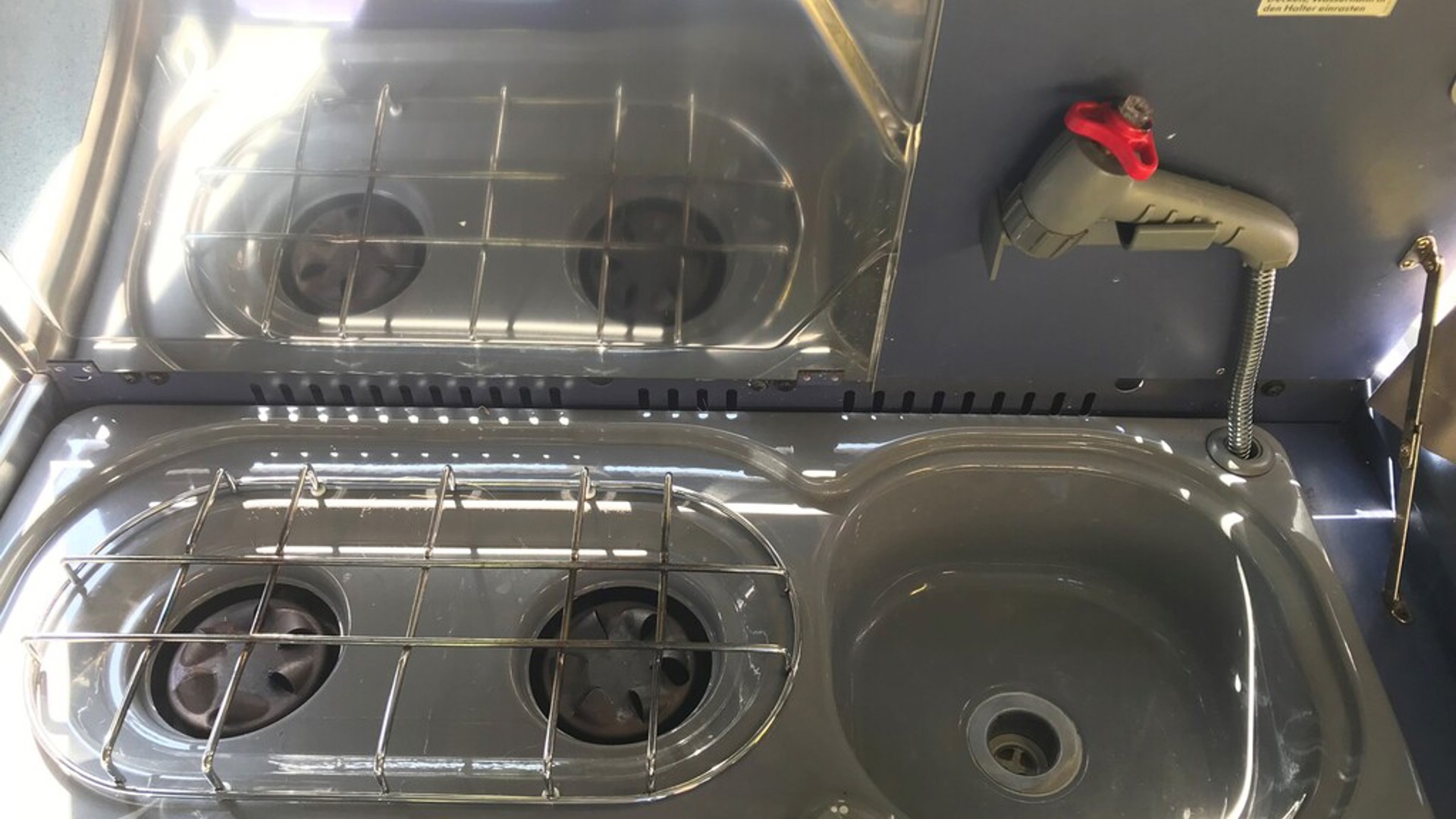This autoTRADER.ca Find of the Week is one that can get you where you need to go, and then give you many of the comforts of home once you've gotten there. It's a modern version of a classic model, and its a vehicle you're not going to see around every day. It's a 1994 Volkswagen T4 Eurovan camper.
The very first Volkwagen van was, confusingly, called the Type 2. Because while it was the first van, it was the company's second car following the Type 1, better known as the Beetle. Strangely, the next-generation of the van was then named the Type 2 T3, or Type 2 Type 3, even though it was far from being the company's second or even third vehicle. That naming scheme has persisted over the years all the way to the current model, known as the T6.1, because it is a refreshed version of the sixth-generation model.
Called the Transporter in Europe, or Combi, or even California depending on the body style, the VW van has had more names here in North America. Microbus, Vanagon, Eurovan, and so on, depending on the generation.
The Transporter T4 was sold here as the Eurovan, and it was the first one to have a water-cooled engine mounted in the front. The T3 had a mix of air and water-cooled engines, but they were all still mounted in the back, the way Ferdinand Porsche intended. The front-engine change was under consideration for the T3, since VW's passenger cars had already made the switch, but the vans took a few years longer.
A versatile platform, VW used versions of the Eurovan as cargo vans, passenger vans, and even ambulances. Of course, it continued the factory-authorized camper conversions that VW had long been famous for in these vans.
While the Westfalia pop-up style conversion, as the rear-hinged extendable fabric upper deck is best known, was the most recognizable of the VW camper vans, full hardtop options were available too. They offer much more headroom, since the roof is full-height for the entire length of the van, and they also offer all that extra space without forcing the driver to stop, park, raise (and then lower) the roof. On top of the extra space, these models have less chance of water coming in, too, though they lack the open-air sleeping experience the pop-tops can offer.
It's impressive what VW can cram into these little campers, but that's how it goes when you can't just go bigger like the massive North American-designed RVs do. Forget the storage compartments hidden in just about every possible location, Volkswagen has packed an entire kitchen in here, including sink, stove, and fridge. The couch turns into a bed, a table folds out of the interior side wall, and there is a separate climate control system to help keep you warm on those cool winter nights. The front seats even turn around if you have guests and need some more seating space. Curtains on all the windows keep the light and prying eyes out. The only thing missing is a toilet, though with a vehicle this small, that's definitely for the best.
Designed for Europe, this wasn't the most powerful van, but this particular one has a 2.5L inline five-cylinder that makes 110 hp and 140 lb-ft of torque. At least it comes with a delightful five-cylinder burble to accompany it. With 265,000 km on the odometer, it's not much of a surprise that this engine's been rebuilt, but that's always a good thing to know. Similarly, the four-speed automatic was recently replaced.
It's for sale in Mill Bay, B.C., a town on Vancouver Island. The seller says that it's currently wearing collector license plates, which has some insurance benefits for the owner. It is, after all, now 25 years old. If you're thinking it might be van time, then this might be just the van for you.





























